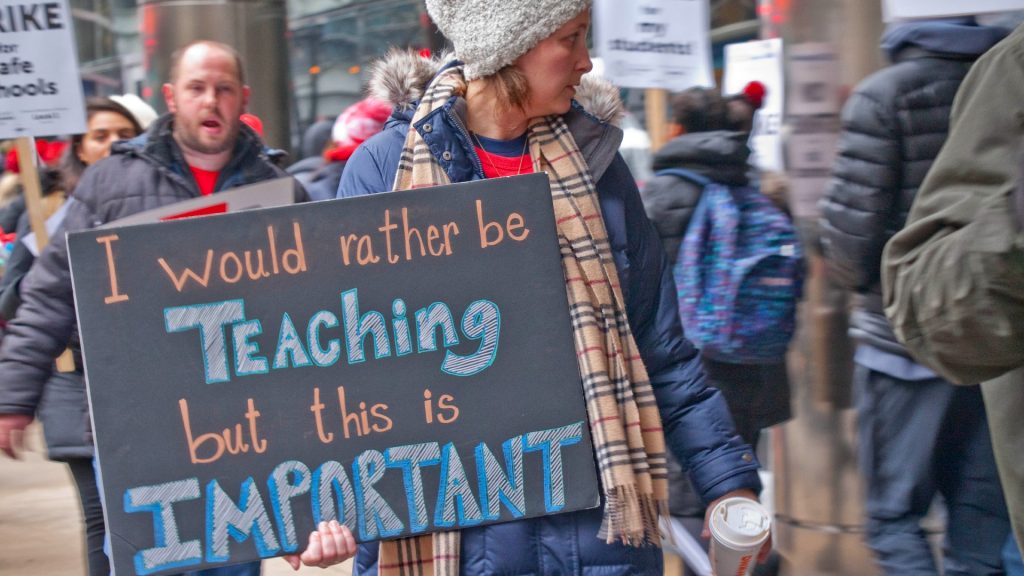Columbus Teachers Officially Strike Days Before Start Of School
Educators have begun a Columbus strike for smaller class sizes and more teachers in the arts, just days before the school year begins.

The 2022-2023 school year is off to a rocky start for one Ohio district. Although the nation is experiencing record enrollment drops, a massive teacher shortage, and youth mental health crisis, Columbus teachers are striking just before the start of the school year. This is driving a return to virtual classes until an agreement can be met.
The Columbus Education Association (CEA) has not gone on strike in 47 years. The union is acting on behalf of educators serving the Columbus City Schools. To support the Columbus strike, the union has started a Go Fund Me which has already raised over $32,000.
While it is unclear how the donation money will be spent, the Columbus strike demands are clear. They want smaller class sizes, full-time art and music education, as well as properly-staffed P.E. teachers. Unfortunately, these demands are becoming increasingly difficult to meet. As fewer college students are choosing to earn education degrees and more teachers are retiring, the worker shortage has created a necessity to combine classrooms and teaching duties to properly serve students.
In addition, core curriculum proficiency is well below state standards. Although music and art classes may be a focal point of the Columbus strike, the district’s core class test rankings are in the bottom 50% of Ohio public schools earning just a 2/10. Well before the pandemic widened learning gaps and set students back, during the 2018-2019 school year, students were only reaching average math proficiency levels at a rate of 32% compared to the state’s overall average of 63%.
Reading rates were not much better. During the same time frame, only 38% of students in the Columbus City Schools were reading at proficient levels compared to 64% of students statewide. Test scores and student success rates throughout the pandemic to the present have not been widely released, so although teachers may feel a need for the Columbus strike, their focus on extracurricular activities — while so many students are unable to read and properly solve problems — is a greater concern that will affect students for much longer throughout their academic career.
As if this weren’t enough to confuse the situation, Columbus teachers have been chronically absent for years. The pandemic contributed to this epidemic, but even in 2019, a third of teachers were absent more often than their students. The teachers union blamed working conditions, and lack of proper family planning/support, and based on the funds raised for the Columbus strike many community members believe this to be true.

Regardless, many teachers’ unions have gone on strike for higher pay, better benefits, and standard employee care. The demands of the CEA pail in comparison. While music and art classes may hold some benefits, students who cannot read and do basic math are more likely to suffer learning gaps and long-term struggles. In addition, long-term isolation has led to a mass youth mental health national emergency, but in order to ensure that schools have full-time physical education teachers and classes in the arts, educators involved in the Columbus strike are once again forcing children to miss out on in-person learning opportunities.







